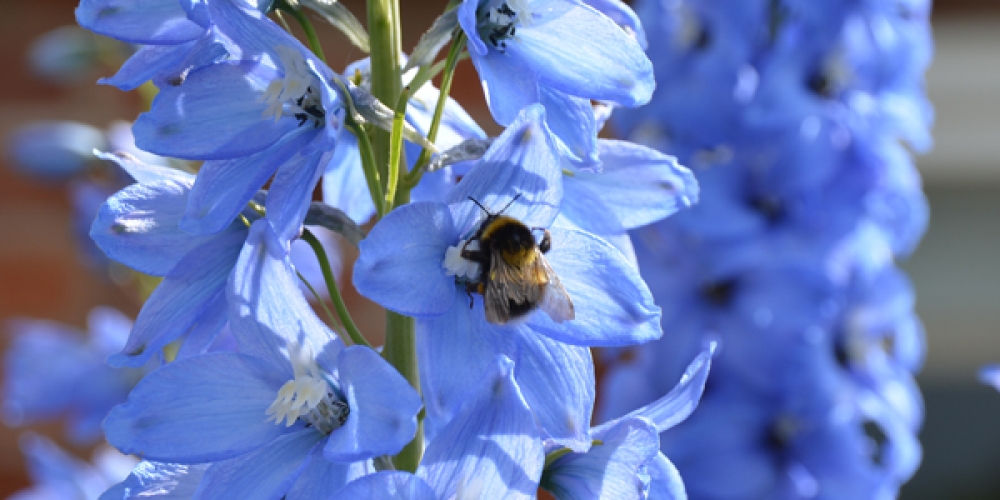Our bumblebees are mainly under threat because of changes to the countryside in the UK. Changes in agricultural techniques have meant that there are far fewer wildflowers in the landscape than there used to be, meaning that many of our bumblebee species are struggling to survive. The dramatic decline in populations of most species, and the extinction of two species in the UK, illustrate that something needs to be done.
How we can help
We can ensure that the flowers, plants and hedgerows in and around our gardens are bee-friendly. This means choosing flowers that are rich in pollen and nectar which bees can easily access from spring until late summer. This will ensure that there is a good supply of pollen at all of the crucial times
- When the queens are establishing nests;
- When nests are growing;
- When nests are producing new queens and males;
- When queens are fattening up ready for hibernation.
The greater the number of suitable flowering plants in your garden the better but you should aim for at least two kinds of bee-friendly plant for each flowering period. You will find all sorts of exotic things in garden centres and catalogues which bees will enjoy.
What to avoid
Some species have a habit of escaping from gardens and invading wild habitats nearby, for example, Rhododendron ponticum and Himalayan balsam. These are probably best avoided. Certain plants have flower shapes that bumblebees cannot use. For example, some flowers have petals that form long tunnels which are too long or narrow for the bees to feed from. Similarly, flowers with multiple tightly packed heads offer bees very little accessible food. Other flowers may not be suitable because they produce little or no pollen and nectar, often as a result of selective breeding by horticulturalists for their pleasing appearance. Plants like pansies and double begonias offer little for bumblebees and other pollinators. Plantlife offers useful guidance.
You should avoid using any pesticides in your garden. They are often labelled as 'bug killers', but almost all of these can harm bumblebees. Some pests can be controlled by planting certain other plants nearby. This is known as companion planting; creating plant communities for mutual benefit is an old gardening tradition. However, companion planting isn't just about pest control. By combining plants carefully, plants can help each other in terms of providing nutrients in the soil, offering protection from wind or sun and also, by attracting beneficial pests or acting as a decoy for harmful ones. Discover more on the BBC website here.

